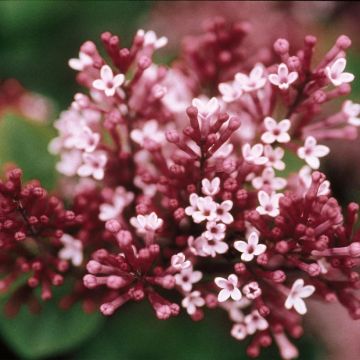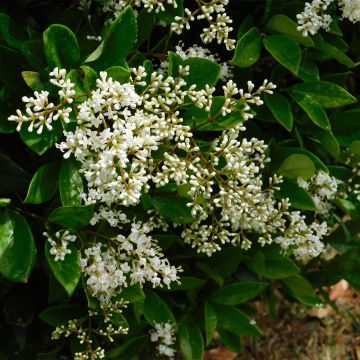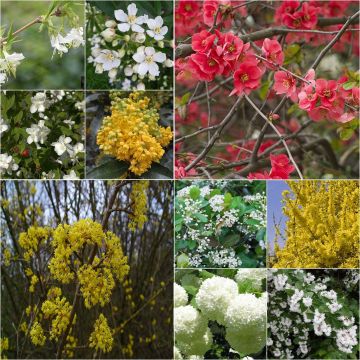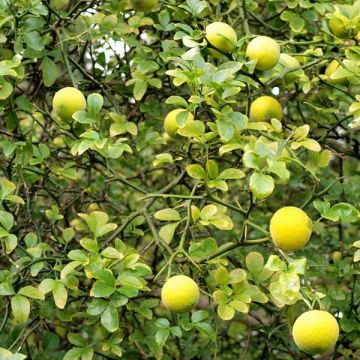

Syringa vulgaris Capitaine Baltet - Common Lilac
Syringa vulgaris Capitaine Baltet - Common Lilac
Syringa vulgaris Capitaine Baltet
Common Lilac, Lilac
Planted in November and not taking at all!
nathalie, 22/05/2024
Special offer!
Receive a €20 voucher for any order over €90 (excluding delivery costs, credit notes, and plastic-free options)!
1- Add your favorite plants to your cart.
2- Once you have reached €90, confirm your order (you can even choose the delivery date!).
3- As soon as your order is shipped, you will receive an email containing your voucher code, valid for 3 months (90 days).
Your voucher is unique and can only be used once, for any order with a minimum value of €20, excluding delivery costs.
Can be combined with other current offers, non-divisible and non-refundable.
Home or relay delivery (depending on size and destination)
Schedule delivery date,
and select date in basket
This plant carries a 24 months recovery warranty
More information
We guarantee the quality of our plants for a full growing cycle, and will replace at our expense any plant that fails to recover under normal climatic and planting conditions.
Would this plant suit my garden?
Set up your Plantfit profile →
Description
The Syringa vulgaris 'Capitaine Baltet' is an old French variety endowed with a magnificent fragrance, both sweet and powerful. The bush produces a multitude of blue-mauve flowers in spring or early summer over a long period. Its flexible growth and languid, rather irregular habit are dressed in medium green, heart-shaped foliage. This variety, which possesses the charm and solidity of an old family of plants brings a touch of nostalgia in the garden. It is as interesting in a flowering hedge or as a single plant as it is in bouquets. It adapts to all soils and will be happy in full sun or in partial shade.
The Syringa 'Capitaine Baltet' is a variety obtained by Victor Lemoine in 1919, belonging to the Oleaceae family. It comes from the wild species Syringa vulgaris, the common lilac, native to southeastern Europe. 'Capitaine Baltet' forms an erect and deciduous bush, with a somewhat spread out habit, rising to 3 m (9 ft 10 in) 25, with a span of 2 m (6 ft 7 in) 50. Its growth is quite fast, encouraged by rich and fresh soil. This variety flowers abundantly in April-May, sometimes until June, in the form of very fragrant pyramidal thyrsus, 10 to 20 cm (3.9 to 7.9 in) long, made up of small single flowers, mauve in colour with blue touches. These inflorescences are grouped in pairs at the end of the previous year's shoots. By regularly pruning faded flowers, it is possible to observe a small resurgence in summer. The flowering attracts many butterflies.
Fragrance, flowering, childhood memories or even as a symbol of a significant event, everyone has a good reason to love lilacs, as endearing as they are unpretentious. The Lilac 'Capitaine Baltet' is no exception: easy to grow and very vigorous, it embodies the charm and simplicity inherent in old gardens. It is a major element for the creation of a scent garden, and its flowering will accompany that of hawthorns and cytises, as well as the flowering bushes of tree peonies. It can be planted at the edge of a grove, in groups, alone or as a mixed free hedge with other small trees (flowering apple trees, Japanese cherry trees, Chinese almond trees, Japanese quinces, deutzias...). Its beautiful, very fragrant clusters are appreciated in bouquets, along with garden iris, campanulate and peonies, in spring.
Syringa vulgaris Capitaine Baltet - Common Lilac in pictures


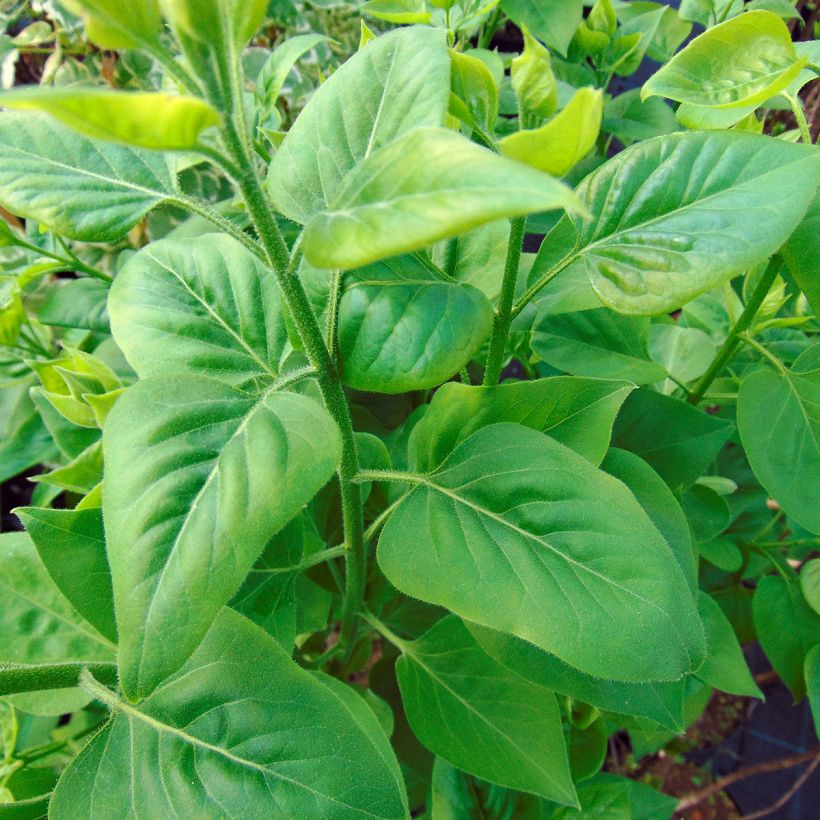

Plant habit
Flowering
Foliage
Botanical data
Syringa
vulgaris
Capitaine Baltet
Oleaceae
Common Lilac, Lilac
Cultivar or hybrid
Other Syringa - Lilac
View all →Planting and care
The Syringa vulgaris 'Capitaine Baltet' is planted from November to March and from June to September. It tolerates any ordinary soil, but it prefers fresh, rich, deep, loose, even calcareous soils. A complete fertiliser should be added every year at the start of the growing season. The substrate must be moist and well-drained. It is preferable to install it in full sun or in light shade in a hot climate, as its flowering is better when it receives a maximum amount of light, and when the winters are contrasting. It is useful to cut off the faded inflorescences after flowering to avoid fruiting, which is of no interest and exhausts the young plant. This will encourage more abundant flowering the following year. This variety flowers on the shoots from the previous year. A slight pruning should be carried out at the end of winter.
Planting period
Intended location
Care
Planting & care advice
-
, onOrder confirmed
Reply from on Promesse de fleurs
Similar products
Haven't found what you were looking for?
Hardiness is the lowest winter temperature a plant can endure without suffering serious damage or even dying. However, hardiness is affected by location (a sheltered area, such as a patio), protection (winter cover) and soil type (hardiness is improved by well-drained soil).

Photo Sharing Terms & Conditions
In order to encourage gardeners to interact and share their experiences, Promesse de fleurs offers various media enabling content to be uploaded onto its Site - in particular via the ‘Photo sharing’ module.
The User agrees to refrain from:
- Posting any content that is illegal, prejudicial, insulting, racist, inciteful to hatred, revisionist, contrary to public decency, that infringes on privacy or on the privacy rights of third parties, in particular the publicity rights of persons and goods, intellectual property rights, or the right to privacy.
- Submitting content on behalf of a third party;
- Impersonate the identity of a third party and/or publish any personal information about a third party;
In general, the User undertakes to refrain from any unethical behaviour.
All Content (in particular text, comments, files, images, photos, videos, creative works, etc.), which may be subject to property or intellectual property rights, image or other private rights, shall remain the property of the User, subject to the limited rights granted by the terms of the licence granted by Promesse de fleurs as stated below. Users are at liberty to publish or not to publish such Content on the Site, notably via the ‘Photo Sharing’ facility, and accept that this Content shall be made public and freely accessible, notably on the Internet.
Users further acknowledge, undertake to have ,and guarantee that they hold all necessary rights and permissions to publish such material on the Site, in particular with regard to the legislation in force pertaining to any privacy, property, intellectual property, image, or contractual rights, or rights of any other nature. By publishing such Content on the Site, Users acknowledge accepting full liability as publishers of the Content within the meaning of the law, and grant Promesse de fleurs, free of charge, an inclusive, worldwide licence for the said Content for the entire duration of its publication, including all reproduction, representation, up/downloading, displaying, performing, transmission, and storage rights.
Users also grant permission for their name to be linked to the Content and accept that this link may not always be made available.
By engaging in posting material, Users consent to their Content becoming automatically accessible on the Internet, in particular on other sites and/or blogs and/or web pages of the Promesse de fleurs site, including in particular social pages and the Promesse de fleurs catalogue.
Users may secure the removal of entrusted content free of charge by issuing a simple request via our contact form.
The flowering period indicated on our website applies to countries and regions located in USDA zone 8 (France, the United Kingdom, Ireland, the Netherlands, etc.)
It will vary according to where you live:
- In zones 9 to 10 (Italy, Spain, Greece, etc.), flowering will occur about 2 to 4 weeks earlier.
- In zones 6 to 7 (Germany, Poland, Slovenia, and lower mountainous regions), flowering will be delayed by 2 to 3 weeks.
- In zone 5 (Central Europe, Scandinavia), blooming will be delayed by 3 to 5 weeks.
In temperate climates, pruning of spring-flowering shrubs (forsythia, spireas, etc.) should be done just after flowering.
Pruning of summer-flowering shrubs (Indian Lilac, Perovskia, etc.) can be done in winter or spring.
In cold regions as well as with frost-sensitive plants, avoid pruning too early when severe frosts may still occur.
The planting period indicated on our website applies to countries and regions located in USDA zone 8 (France, United Kingdom, Ireland, Netherlands).
It will vary according to where you live:
- In Mediterranean zones (Marseille, Madrid, Milan, etc.), autumn and winter are the best planting periods.
- In continental zones (Strasbourg, Munich, Vienna, etc.), delay planting by 2 to 3 weeks in spring and bring it forward by 2 to 4 weeks in autumn.
- In mountainous regions (the Alps, Pyrenees, Carpathians, etc.), it is best to plant in late spring (May-June) or late summer (August-September).
The harvesting period indicated on our website applies to countries and regions in USDA zone 8 (France, England, Ireland, the Netherlands).
In colder areas (Scandinavia, Poland, Austria...) fruit and vegetable harvests are likely to be delayed by 3-4 weeks.
In warmer areas (Italy, Spain, Greece, etc.), harvesting will probably take place earlier, depending on weather conditions.
The sowing periods indicated on our website apply to countries and regions within USDA Zone 8 (France, UK, Ireland, Netherlands).
In colder areas (Scandinavia, Poland, Austria...), delay any outdoor sowing by 3-4 weeks, or sow under glass.
In warmer climes (Italy, Spain, Greece, etc.), bring outdoor sowing forward by a few weeks.




































